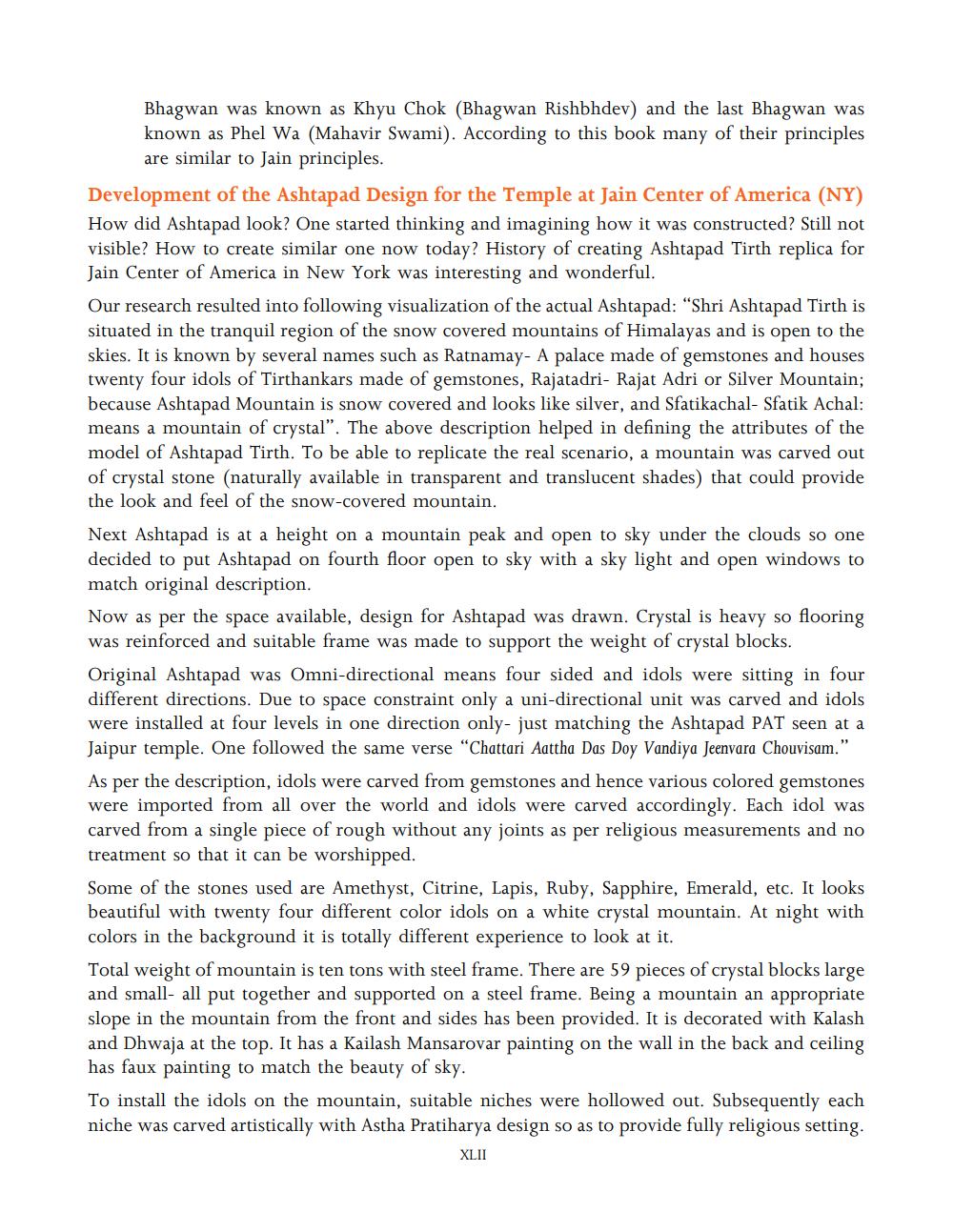________________
Bhagwan was known as Khyu Chok (Bhagwan Rishbhdev) and the last Bhagwan was known as Phel Wa (Mahavir Swami). According to this book many of their principles
are similar to Jain principles. Development of the Ashtapad Design for the Temple at Jain Center of America (NY) How did Ashtapad look? One started thinking and imagining how it was constructed? Still not visible? How to create similar one now today? History of creating Ashtapad Tirth replica for Jain Center of America in New York was interesting and wonderful. Our research resulted into following visualization of the actual Ashtapad: "Shri Ashtapad Tirth is situated in the tranquil region of the snow covered mountains of Himalayas and is open to the skies. It is known by several names such as Ratnamay- A palace made of gemstones and houses twenty four idols of Tirthankars made of gemstones, Rajatadri- Rajat Adri or Silver Mountain; because Ashtapad Mountain is snow covered and looks like silver, and Sfatikachal- Sfatik Achal: means a mountain of crystal". The above description helped in defining the attributes of the model of Ashtapad Tirth. To be able to replicate the real scenario, a mountain was carved out of crystal stone (naturally available in transparent and translucent shades) that could provide the look and feel of the snow-covered mountain. Next Ashtapad is at a height on a mountain peak and open to sky under the clouds so one decided to put Ashtapad on fourth floor open to sky with a sky light and open windows to match original description. Now as per the space available, design for Ashtapad was drawn. Crystal is heavy so flooring was reinforced and suitable frame was made to support the weight of crystal blocks. Original Ashtapad was Omni-directional means four sided and idols were sitting in four different directions. Due to space constraint only a uni-directional unit was carved and idols were installed at four levels in one direction only- just matching the Ashtapad PAT seen at a Jaipur temple. One followed the same verse "Chattari Aattha Das Doy Vandiya Jeenvara Chouvisam." As per the description, idols were carved from gemstones and hence various colored gemstones were imported from all over the world and idols were carved accordingly. Each idol was carved from a single piece of rough without any joints as per religious measurements and no treatment so that it can be worshipped. Some of the stones used are Amethyst, Citrine, Lapis, Ruby, Sapphire, Emerald, etc. It looks beautiful with twenty four different color idols on a white crystal mountain. At night with colors in the background it is totally different experience to look at it. Total weight of mountain is ten tons with steel frame. There are 59 pieces of crystal blocks large and small- all put together and supported on a steel frame. Being a mountain an appropriate slope in the mountain from the front and sides has been provided. It is decorated with Kalash and Dhwaja at the top. It has a Kailash Mansarovar painting on the wall in the back and ceiling has faux painting to match the beauty of sky.
To install the idols on the mountain, suitable niches were hollowed out. Subsequently each niche was carved artistically with Astha Pratiharya design so as to provide fully religious setting.
XLII




